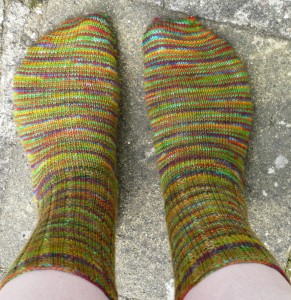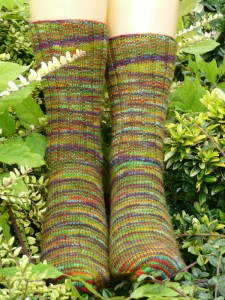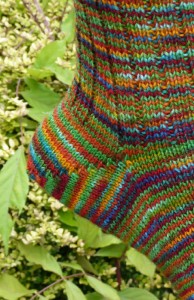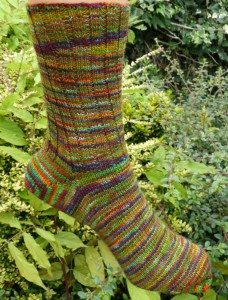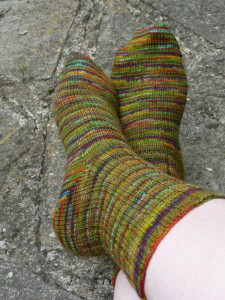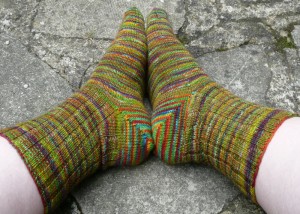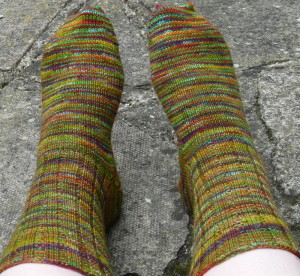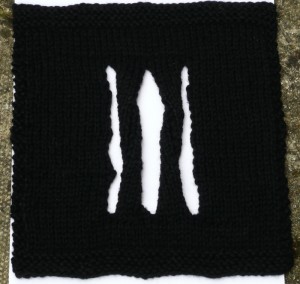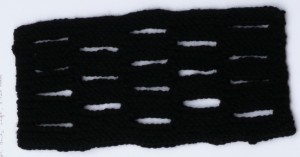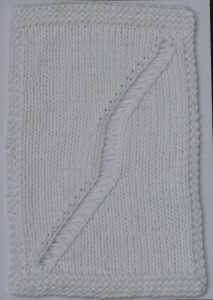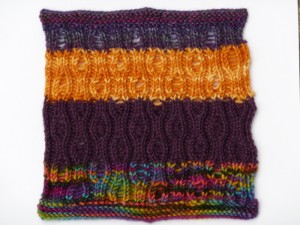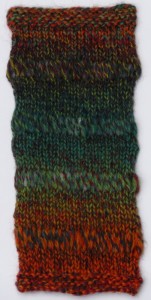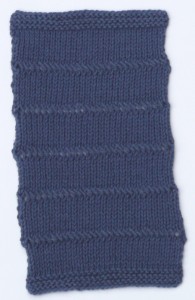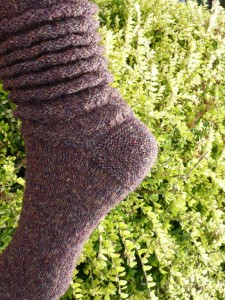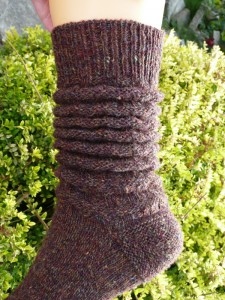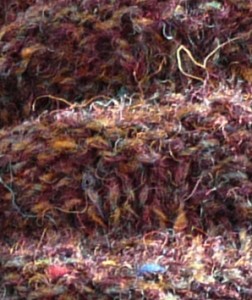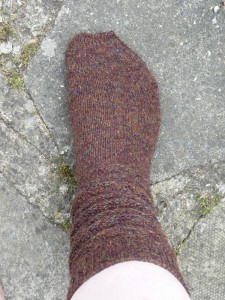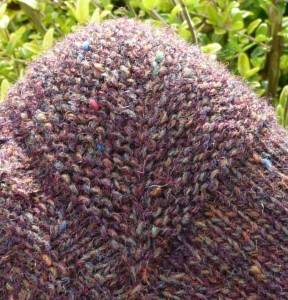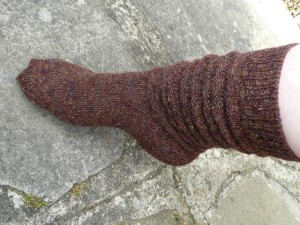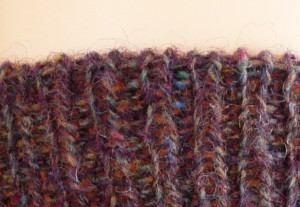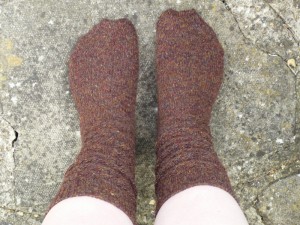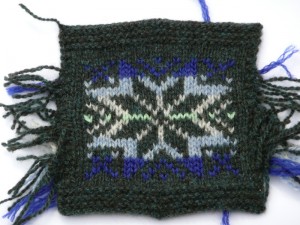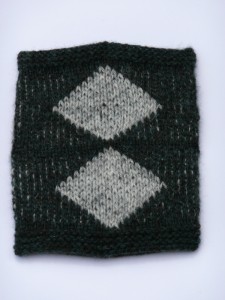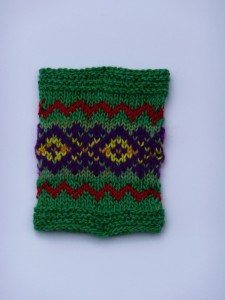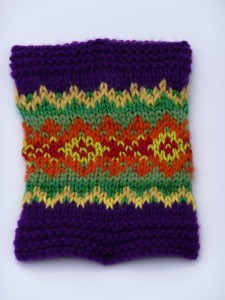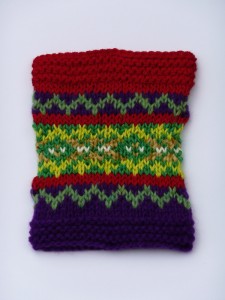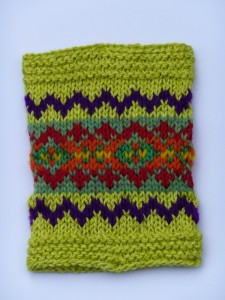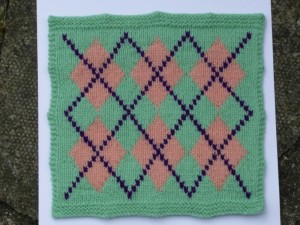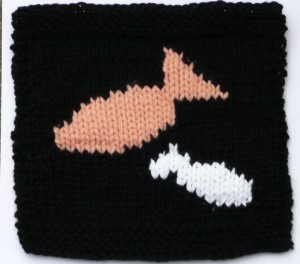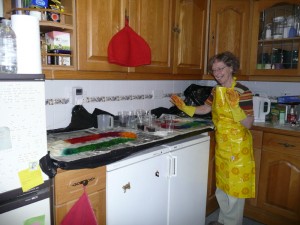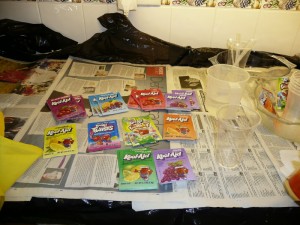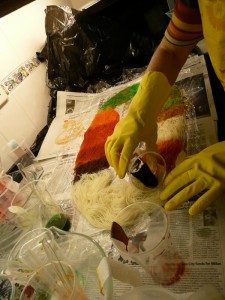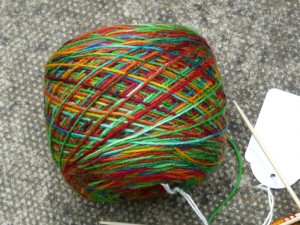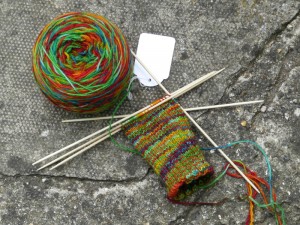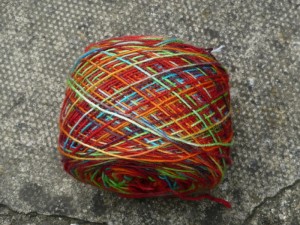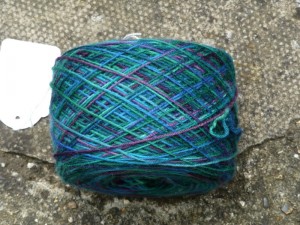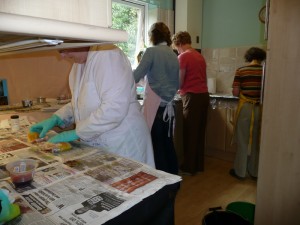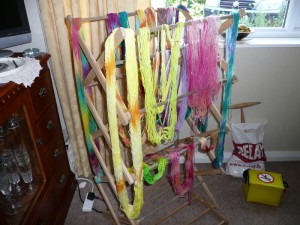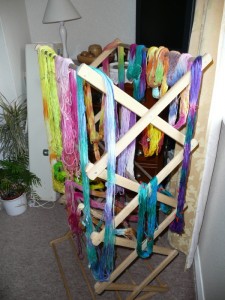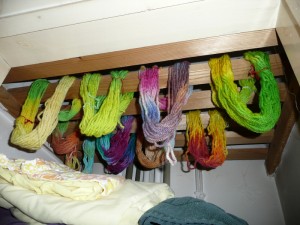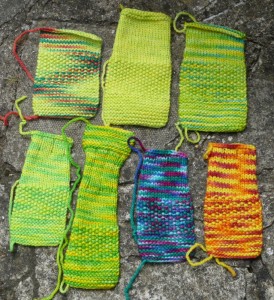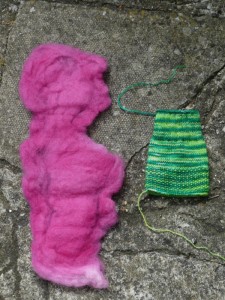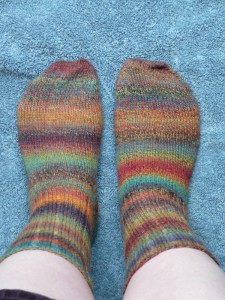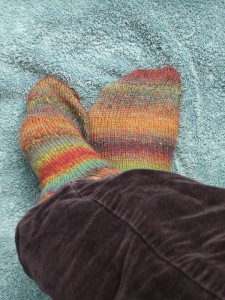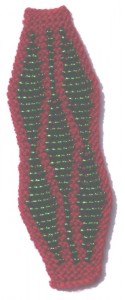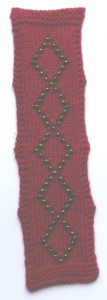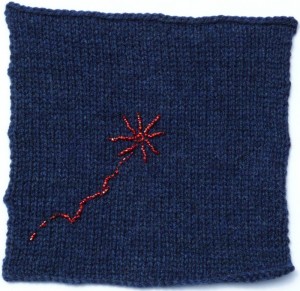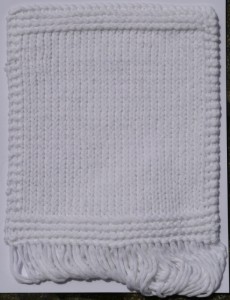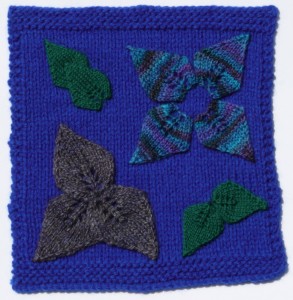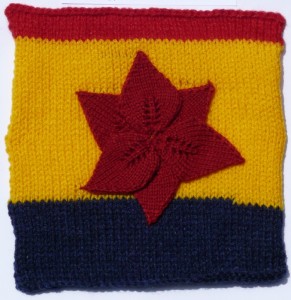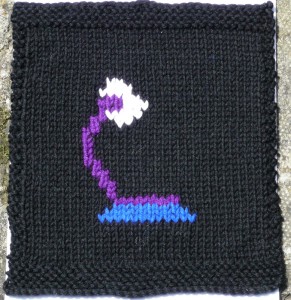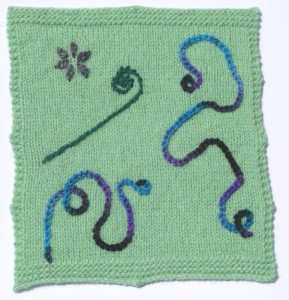It has been a busy few weeks knitting-wise, so more will follow soon. First off though, on the 5th to the 7th of July I went to the Knitting and Crochet Guild AGM, this year held in Winchester.
I arrived shortly after lunch on the Friday, and after collecting my badge and saying a few hellos we had our first outing, to the Knitting Reference Library at Winchester School of Art. They hold the collections of Montse Stanley, Richard Rutt, and Jane Waller, and we had a very interesting and informative romp through the history and sociology of knitting, based on these collections, given by Linda Newington, Head Librarian, and helped by her assistant.
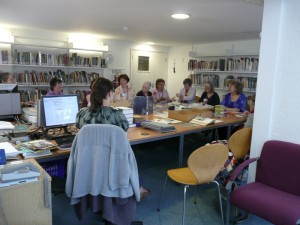
The Knitting Reference Library mostly holds patterns and books, with Montse’s extensive collection of objects held in the Special Collections at the Hartley Library, University of Southampton. The Knitting Reference Library does have a small handling collection though, which they use with students, and which they brought out to show us. Their collection really is varied, from knitted toys (some incredibly kitsch 🙂 )
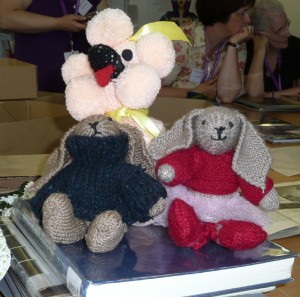
to the most beautiful and detailed gloves and mittens, some knitted by Richard Rutt himself.
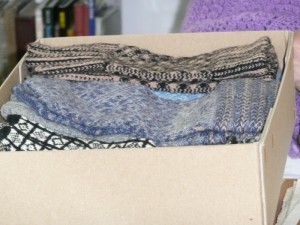
After an opportunity to briefly browse the shelves of the collection we piled back into the assortment of vehicles, and trundled back to the University of Winchester for a well-deserved cup of tea and a biscuit, and the serious task of checking out the stock Gill of the Woolly Workshop had brought with her for the shopping room. There were also two quizzes designed to celebrate 30 years of the guild, and as a getting-to-know-you exercise to fit in alongside the hectic round of shopping.
After dinner was the show and tell, a wonderful wide variety of knitted items were shown, lots of inspiration. Then off home to bed.
Saturday started with with AGM proper. It was interesting to hear about the progress of the guild this year, and plans for the future, but it would have been nice if there had been more time allowed, so that more of the questions could have been answered more satisfactorily.
Following the AGM, Linda Newington gave a talk on the Knitting Reference Library, and the In the Loop conference. It was interesting to hear a bit more about the library, and exhibition and conference, particularly since I wasn’t able to get to the conference itself. Then after lunch we had another expedition, this time to Winchester cathedral.
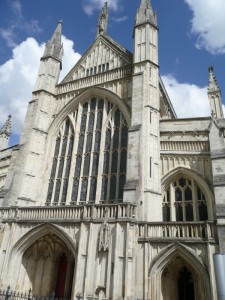
The cathedral doesn’t have any knitting in it, but it does have some lovely woven vestments, and some very interesting tiled floors. I love tiling, and got completely carried away with photographing all of the different tiles. I think I may try and use them for inspiration for knitting at some point.
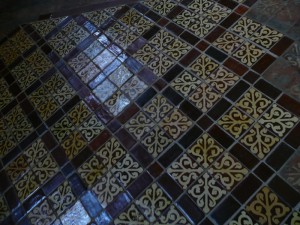
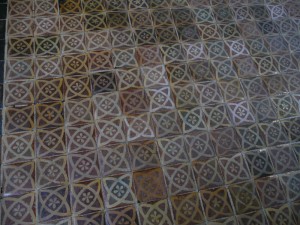
After a much appreciated cup of tea back at the University, Imogen Semken, one of the Directors of the guild gave a very interesting talk and demonstration on millinery. I was amazed at how you could create a sturdy base for a hat just by wetting the material (I think it was banana fibre) and stretching it over a mould and waiting for it to dry.
After dinner Joyce Meader gave a fantastic talk on military knitting patterns. In the picture below she is holding up two pairs of American civil war socks, you can choose which flag you put on the sole of the foot so that you can walk on the opposition 🙂
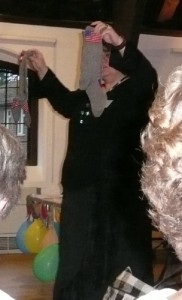
Joyce is a wonderfully entertaining speaker who really knows her subject. She had us all rolling in the aisles for the whole duration of her talk. If you get the opportunity to hear one of her talks definitely jump at it.
Sunday morning brought a final opportunity for discussion of the guild and its future, and prizes for the two quizzes. I won a pattern book by Debbie Bliss! A surprise and a pleasure. Mary Hawkins rounded off the meeting with a demonstration of how to use a knitting frame (without the aid of an actual knitting frame) as a taster of what we might see when the AGM is held in Ruddington near the Framework Knitters Museum next year.
Of course I didn’t escape without a few purchases:
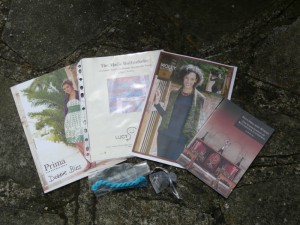
Here is my prize pattern book, a Lucy Neatby instruction booklet on buttonholes, a pattern leaflet, a book on the textiles at Winchester Cathedral and some stitch markers which were given in the welcome bag at the AGM. There were also a couple of pattern books in the welcome bag which I have given to my mum as a consolation prize for not being able to come along.
I took loads more pictures at the AGM (95 of them I think!) which I have finally managed to persuade flickr to upload here.
All in all, a fun time was had. A good opportunity to meet old friends, and make new ones, and of course to see what everyone is knitting.
